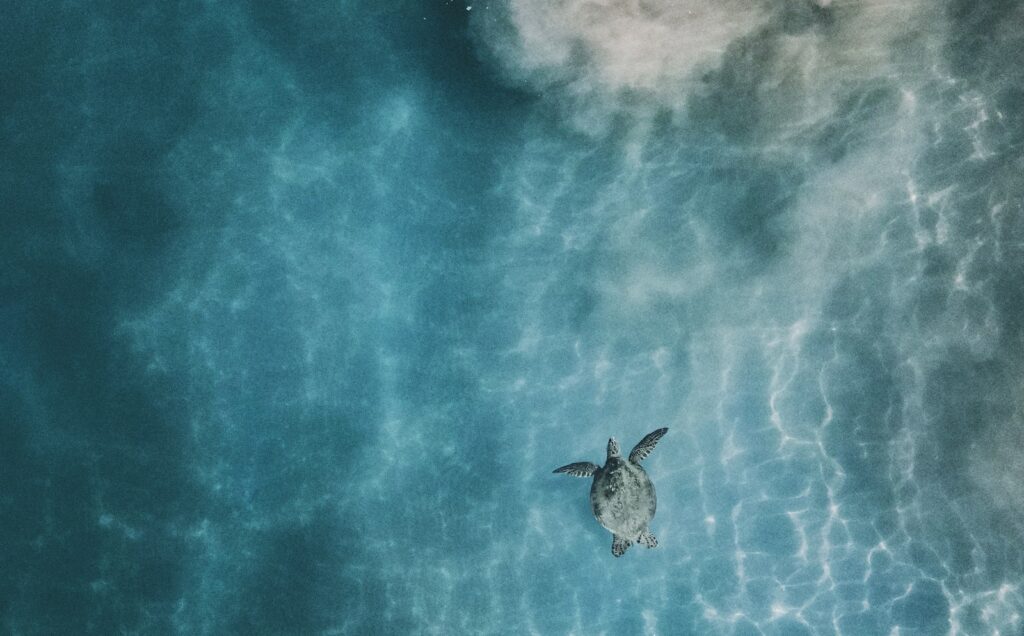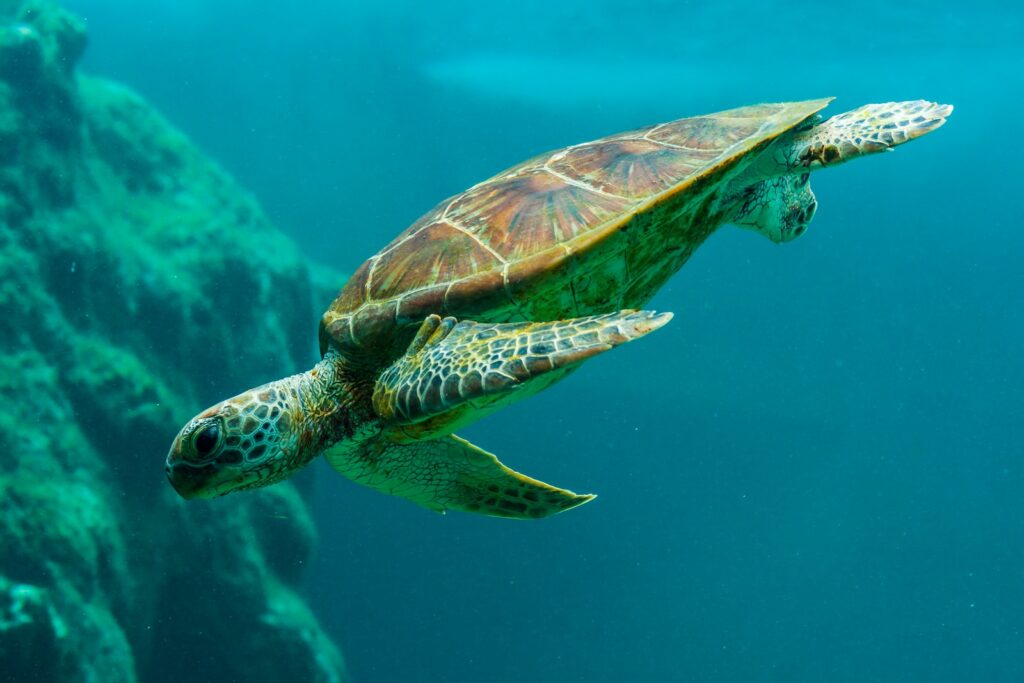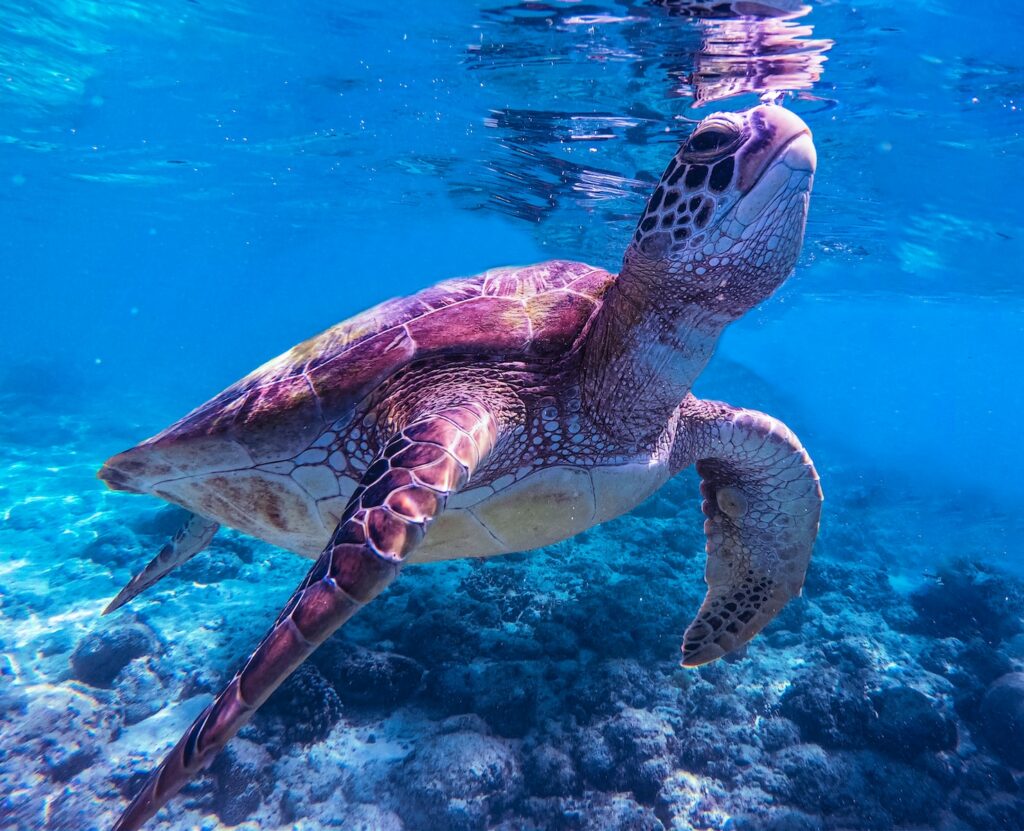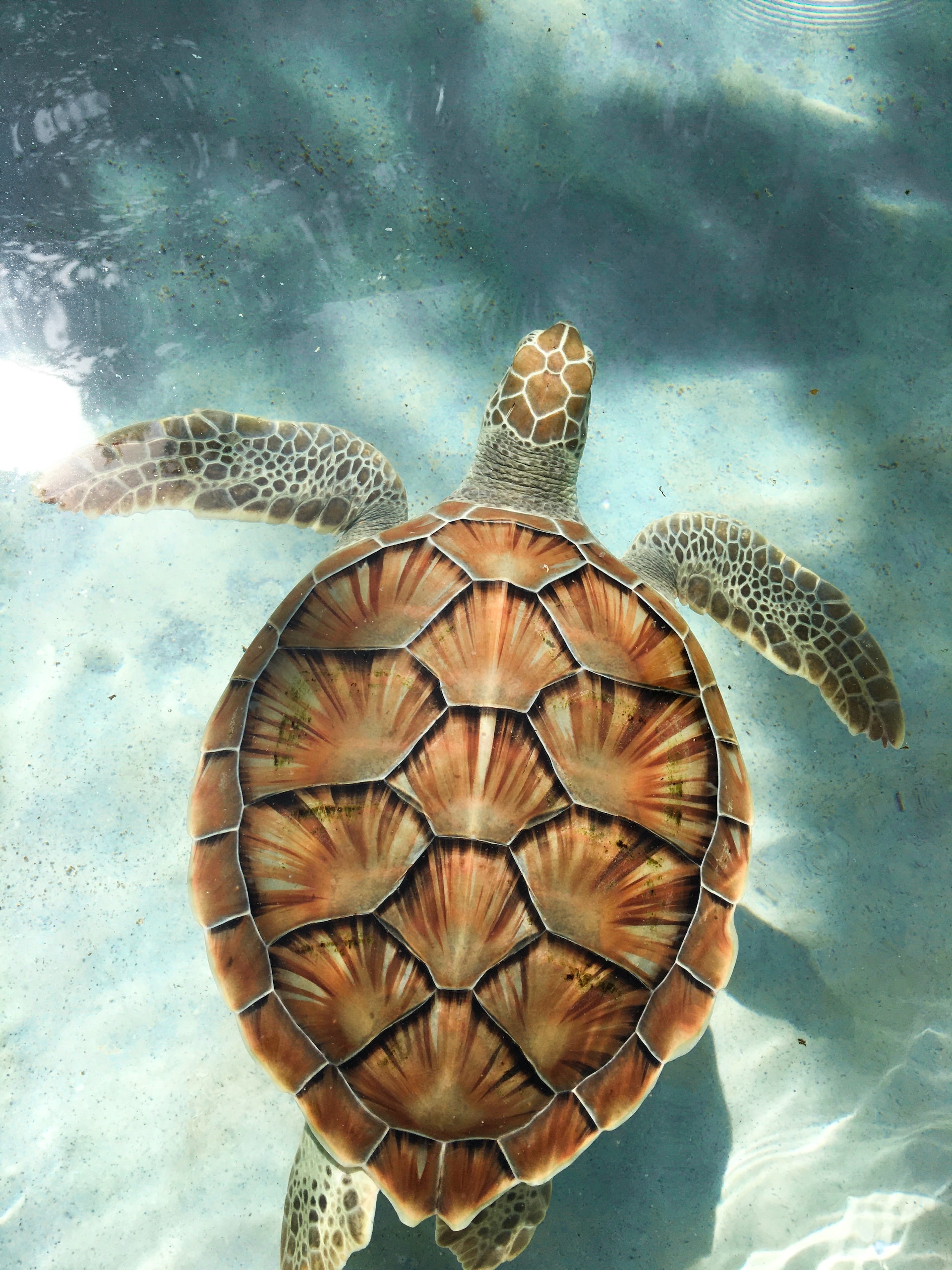Introduction to Sea Turtles
In the vast expanse of the ocean, sea turtles glide with grace, their flippers propelling them through the water like avian wings in the sky. These ancient mariners, who’ve navigated the world’s oceans for over 100 million years, are a testament to the incredible diversity and adaptability of life on Earth.
Overview of Sea Turtles’ Sleep Habits
Sleeping underwater is a fascinating aspect of sea turtle behavior. Unlike humans, who are bound by the need for a terrestrial slumber, sea turtles have evolved to rest in the very element they inhabit. They can sleep at the surface while in deep water or on the bottom wedged under rocks in nearshore waters. Many divers have seen green turtles sleeping under ledges in reefs and rocks. This unique ability is a testament to their remarkable adaptability and resilience.
The Importance of Sleep for Sea Turtles
Sleep is as crucial to sea turtles as it is to any other creature. It’s a time for rest, recovery, and energy conservation. The ability to sleep underwater provides these marine reptiles with a significant advantage. It allows them to stay safe from predators, conserve energy, and remain in their aquatic environment, where they spend the majority of their lives.
The Mystery of Sleeping Underwater

The mystery of how sea turtles sleep underwater is a captivating topic. How do they breathe? How long can they stay submerged? The answers lie in the unique physiological adaptations of these incredible creatures. For instance, sea turtles can slow down their heart rate to conserve oxygen, allowing them to stay underwater for several hours at a time. This phenomenon, known as the diving response, is just one of the many adaptations that make sea turtles such fascinating creatures to study.
How Sea Turtles Breathe Underwater
One of the most intriguing questions about sea turtles is how they manage to breathe underwater. Unlike fish, sea turtles don’t have gills. They breathe air, just like we do. However, they have evolved a remarkable ability to hold their breath for extended periods. When active, a sea turtle may surface every few minutes to breathe. But when resting or sleeping, they can stay submerged for several hours. They achieve this by slowing their heart rate and reducing their metabolism, thereby conserving oxygen. This ability to ‘hold their breath’ is a testament to their incredible adaptability to life in the ocean.
The Diving Response Mechanism
The diving response is a physiological adaptation that allows sea turtles to stay underwater for extended periods. When a sea turtle dives, its heart rate slows down, and blood flow is restricted to essential organs. This response helps to conserve oxygen, enabling the turtle to stay submerged for longer. The diving response is not unique to sea turtles. It’s found in many marine mammals, including seals, dolphins, and even otters. However, in sea turtles, this response is finely tuned to their unique lifestyle and habitat.
The Duration of Sea Turtles’ Sleep
The duration of a sea turtle’s sleep can vary depending on the species and individual. However, it’s generally accepted that sea turtles can sleep underwater for between 4 to 7 hours at a time. This ability to sleep for such extended periods underwater is made possible by their slow metabolism and the aforementioned diving response. According to the Sea Turtle Conservancy, this sleep duration can be even longer in cold water, where their metabolism slows down further.
The Sleeping Locations of Sea Turtles

Sea turtles can sleep in a variety of locations, depending on their environment and species. Some prefer to sleep on the surface in deep water, while others choose to rest on the ocean floor, often wedging themselves under rocks or coral reefs for protection. Green sea turtles, for example, are often found sleeping underwater, particularly under ledges in reefs and rocks. According to American Oceans, land is also of great importance to a green sea turtle, especially during mating and egg-laying seasons.
The Difference Between Freshwater and Sea Turtles’ Sleep
While both freshwater and sea turtles can sleep underwater, there are some differences in their sleep habits. Freshwater turtles, for instance, can easily sleep underwater for about 5 hours at a time. They are able to conserve a lot of their oxygen when they are inactive or sleeping. Sea turtles, on the other hand, have adapted to sleeping in the open ocean, often floating on the surface or sleeping on the ocean floor. These differences highlight the incredible diversity and adaptability of turtles and their ability to thrive in a variety of environments.
The Role of Land in Sea Turtles’ Life
While sea turtles spend most of their lives in the ocean, land plays a crucial role in their life cycle. Female sea turtles return to land to lay their eggs. Some species, like the green sea turtle, also use land for resting and basking. According to American Oceans, the land is of great importance to a green sea turtle, especially during mating and egg-laying seasons.
The Impact of Human Activities on Sea Turtles’ Sleep

Human activities can significantly impact the sleep patterns of sea turtles. Noise pollution, artificial lighting, and habitat destruction can disrupt their sleep and cause stress. Conservation efforts, such as those led by the Living Oceans Foundation, are crucial to protect these magnificent creatures and their habitats. By understanding and respecting the unique sleep habits of sea turtles, we can help ensure their survival for generations to come.
Conclusion
In the grand tapestry of life, sea turtles hold a unique thread. Their ability to sleep underwater, the physiological adaptations that allow them to do so, and their remarkable resilience in the face of environmental changes are all testaments to their enduring presence in our world’s oceans. As we continue to explore and understand these fascinating creatures, we are reminded of the intricate balance of nature and our role in preserving it.
From the depths of the ocean to the shores where they lay their eggs, sea turtles continue to captivate us with their grace, resilience, and the mystery of their underwater slumber. As we strive to protect these ancient mariners, let us remember that every ripple we create on the surface can reach the quietest corners of their underwater world.
FAQs
How long can sea turtles sleep underwater?
Sea turtles can sleep underwater for extended periods, typically between 4 to 7 hours. This duration can be even longer in cold water, where their metabolism slows down further.
Are turtles supposed to sleep underwater?
Yes, both freshwater and sea turtles have the ability to sleep underwater. This ability varies among different species and is a result of unique physiological adaptations.
How do sea turtles breathe underwater?
Sea turtles breathe air, just like humans. However, they can hold their breath for extended periods by slowing their heart rate and reducing their metabolism, which helps to conserve oxygen.
Why can’t sea turtles breathe underwater?
Unlike fish, sea turtles do not have gills. They need to surface to breathe air. However, they can stay submerged for extended periods by holding their breath and slowing their metabolism.

